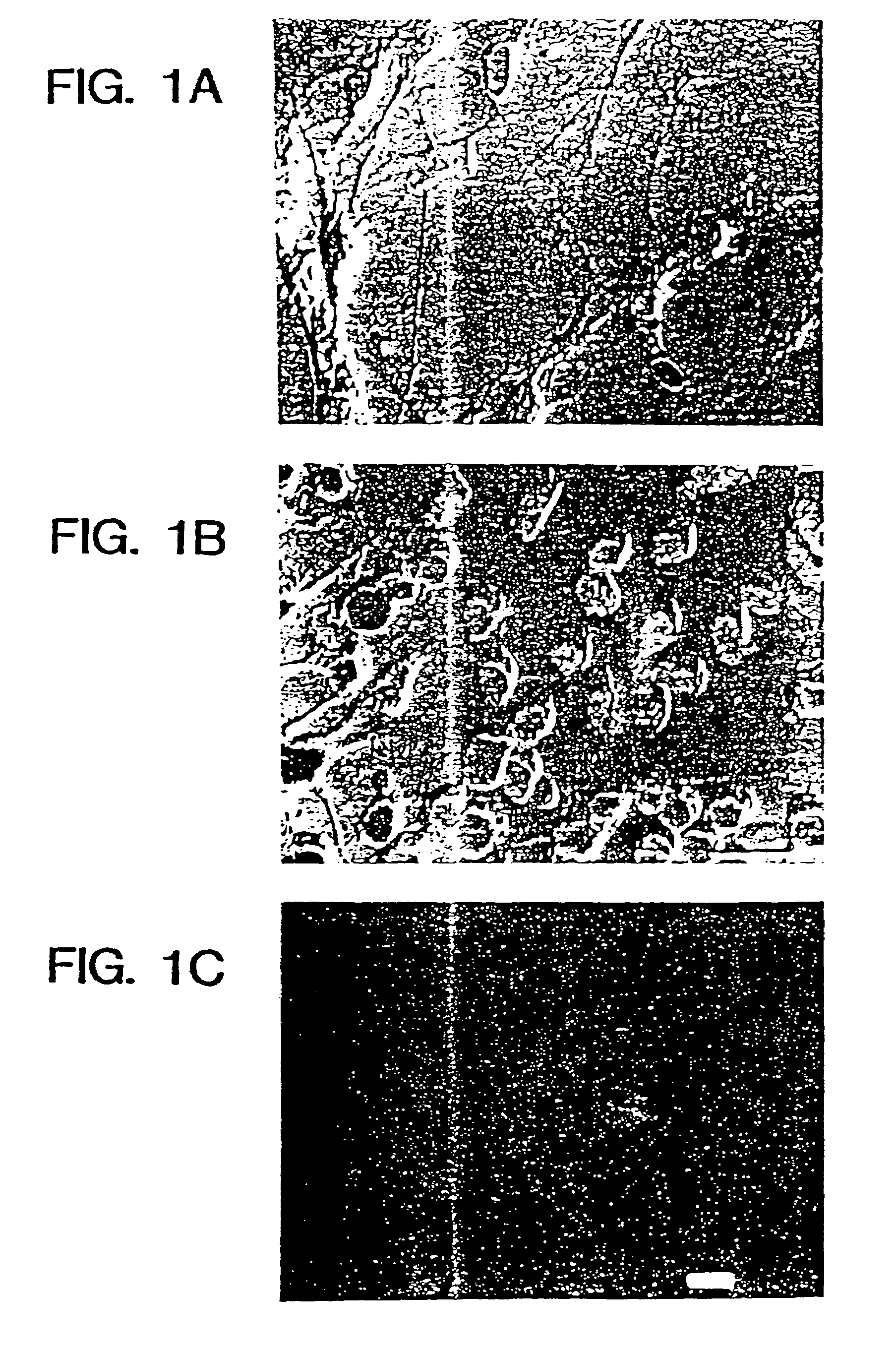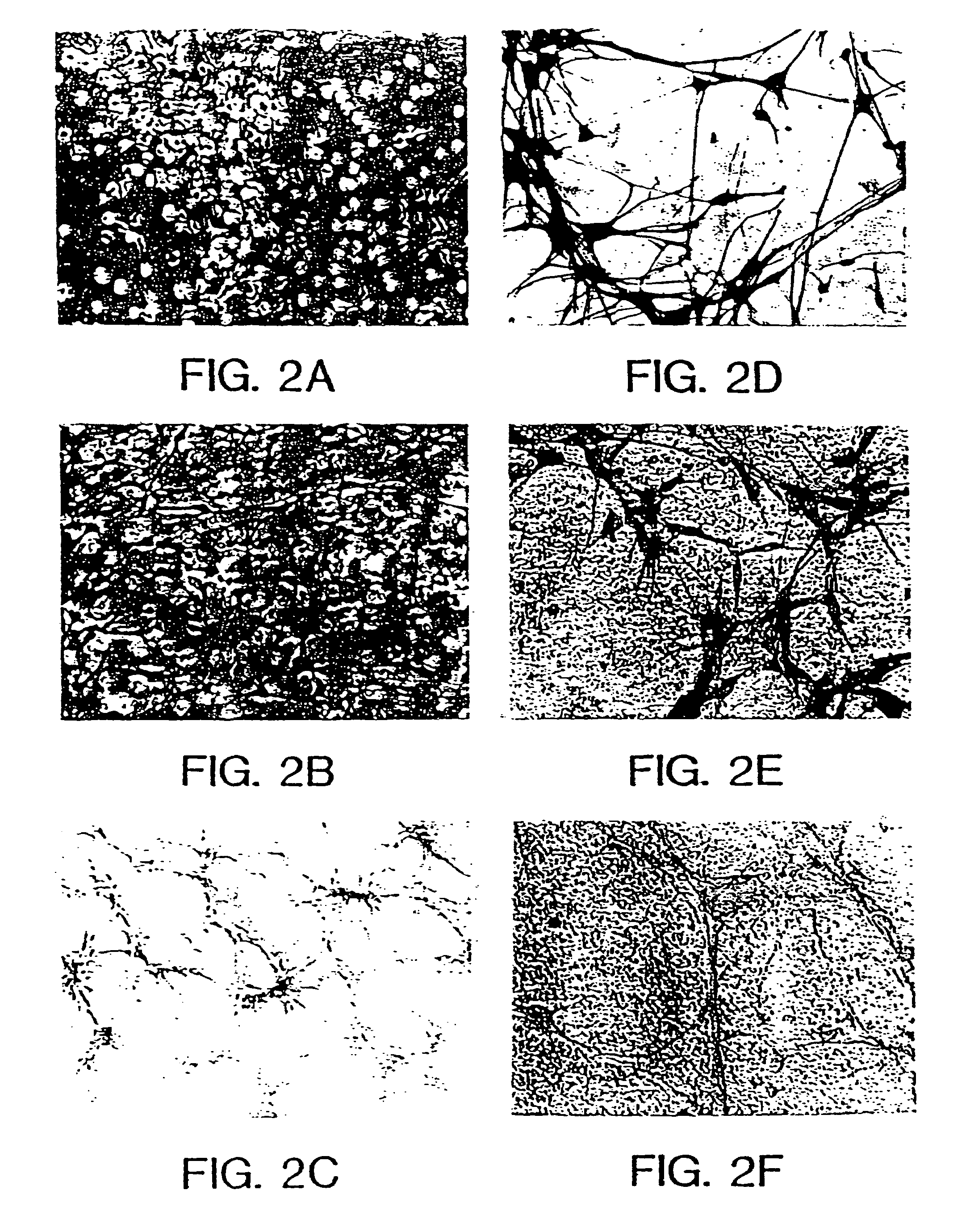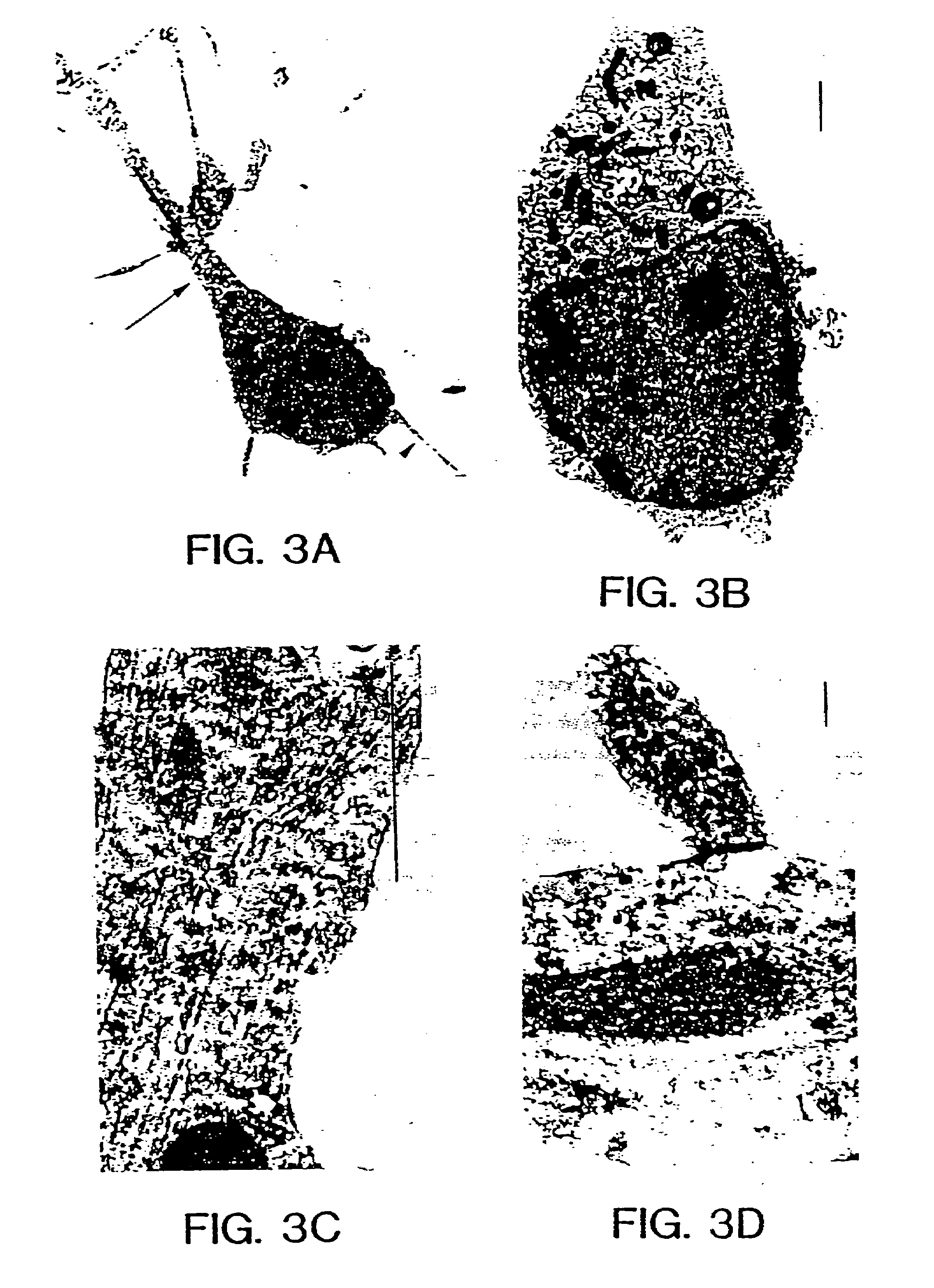Method for production of neuroblasts
a neuroblast and cell technology, applied in the field of cell populations derived from neurons, can solve the problems of delayed neuropharmacologicai studies in the cns, inability to establish cell lines from the central nervous system (cns) and neuronal tissues in the absence of immortalization, and adult neurons that do not survive well in vitro
- Summary
- Abstract
- Description
- Claims
- Application Information
AI Technical Summary
Benefits of technology
Problems solved by technology
Method used
Image
Examples
example 1
Materials and Methods
[0050]Materials: DMEM:F12 medium, N2 supplement and laminin were obtained from Gibco / BRL (Bethesda, Md.); polyornithine (PORN) was obtained from Sigma (St. Louis, Mo.). Recombinant bFGF was from Syntex / Synergen Consortium (Boulder, Colo.). Bovine bFGF was purchased from R&D, Minneapolis, Minn. NeuroTag™ green was obtained from Boehringer Mannheim, Indianapolis, Ind. Cell proliferation kit containing bromodeoxyuridine (BrdU), anti-BrdU antibody and streptavidin / Texas Red was purchased from Amersham, Arlington Heights, Ind. The antibodies used to determine the phenotypes of cells in culture were obtained from the following sources and used at the indicated dilutions: polyclonal rabbit anti-neurofilament 200 (NF) (1:500; Chemicon International, Temecula, Calif.), monoclonal anti-neuron specific enolase (NSE) (1:50; DAKO, Carpenteria, Calif.), monoclonal anti-glia fibrillary acidic protein (GFAP) (1:500-1:10,000; Amersham, Arlington Heights, III), monoclonal anti-vi...
example 2
Growth of Neurons In Vitro
[0062]The chemically defined medium, N2 (Bottenstein and Sato, Proc. Natl. Acad. Sci. USA, 76: 514-517, 1980; Bottenstein, J. E., In: Cell culture in the neurosciences, J. E. Bottenstein and G. H. Sato, Eds., Plenum Press, New York, N.Y., pp 3-43, 1985; di Porizo, et al., Nature, 288:370-373, 1980), has been used to reproducibly generate short-term virtually pure neuronal cultures (Bottenstein, et al., Exp. Cell Res., 125:183-190, 1980; Barnes and Sato, Anal. Biochem., 102:255-302, 1980). This medium does not support the survival or proliferation of non-neuronal cells and it is possible to obtain>95% pure neuronal culture. In defined medium, primary cultures of hippocampal neurons die within 7 days but can be maintained for 2-4 weeks in the presence of hippocampal explants, a feeder layer of astrocytes, in astrocyte-conditioned medium (Banker, G. A., Science, 209:809-810, 1980) or in the presence of bFGF (Walicke and Baird, Proc. Natl. Acad. Sci. USA, 83:30...
example 3
Characterization of Cells
[0069]Several independent criteria were used to show that the cells in the cultures were indeed neurons. These included their morphological characteristics during growth, expression of neuronal markers and ultrastructural analysis by transmission and scanning electron microscopy.
[0070]Cell morphology in culture was similar to that described for short-term cultures of neurons (Banker and Cowan, Brain Res., 126:397-425, 1977; Banker and Cowan, J. Comp. Neurol., 187:469-494, 1979) (FIGS. 2A, B, C). FIG. 2 illustrates photomicrographs showing the morphological changes that occur during the culture and passaging of primary neurons. A shows primary cell culture after 4 days of plating in N2+bFGF contained numerous proliferating and process-bearing cells. B shows primary cells 4 days in culture after passage (passage 3). Cells were larger and interconnected by processes that also increased in size. Small proliferating cells were visible in the culture. C shows cell...
PUM
| Property | Measurement | Unit |
|---|---|---|
| doubling time | aaaaa | aaaaa |
| time | aaaaa | aaaaa |
| concentration | aaaaa | aaaaa |
Abstract
Description
Claims
Application Information
 Login to View More
Login to View More - R&D
- Intellectual Property
- Life Sciences
- Materials
- Tech Scout
- Unparalleled Data Quality
- Higher Quality Content
- 60% Fewer Hallucinations
Browse by: Latest US Patents, China's latest patents, Technical Efficacy Thesaurus, Application Domain, Technology Topic, Popular Technical Reports.
© 2025 PatSnap. All rights reserved.Legal|Privacy policy|Modern Slavery Act Transparency Statement|Sitemap|About US| Contact US: help@patsnap.com



